Reflections on Growing Hope: Practical Tools for Our Changing Climate
 Print This Post
Print This Post
By Nina Prater, NCAT Agriculture Specialist
The third annual NCAT conference is a wrap! My conference planning co-lead Elise Haschke and I have been reflecting on what the many conference speakers at Growing Hope: Practical Tools for Our Changing Climate taught us. After hearing so many different farmers, ranchers, community leaders, and researchers sharing stories and information, it really drove home the fact this work is a long game. When working towards soil health, regenerative grazing, biological soil fertility, agroforestry, climate change mitigation, and community wellbeing, we must look and think long-term because these processes take time. Growing trees takes time. Learning new skills takes time. Accumulating soil carbon takes time. Building community relationships and trust takes time. But climate change is happening now, and so there is no better time to start on these long-term goals — today.
When so much of the economy we work within is dangerously extractive and runs at speeds that our minds can’t even compute, fortunes rising and falling alongside a non-stop news cycle, it is challenging to think and operate with this longer-term mindset. But I recently learned of a way to adjust our minds to start thinking longer term, with a concept called the “200-year present.” It’s a thought experiment that I heard about on the radio show and podcast On Being, with Krista Tippett. I’ll walk you through it. Your “200-year present” begins with the birthdate of the oldest person you knew when you were a child. For me, that was my great-grandmother, Florence Clarke, who was born in 1896. Then the other side of the 200-year present is the 100th birthday of the youngest person you have held in your arms. For me, it’s been a couple years since I got to hold a baby, so let’s say that 100th birthday will be in 2120. That means that I have had physical contact and connection with people who lived or will potentially live between 1896 and 2120, actually a little more than 200 years. Now you can figure out your 200-year present. That’s the lifespan of people who have directly touched our lives.
Now, in agricultural terms, think of all the changes that have happened since 1896, and think of the changes that are to come in the next 100 years. We are all influenced by what came before us, and we all are empowered now to influence what happens in the next 100 years. Starting today, we can choose to begin or continue the land-healing process, fixing mistakes that were made in the past, and returning to agroecological practices that will make the second half of our 200-year-present greener, with carbon being drawn down, with cleaner water and air, with richer soil, with more trees, with increasing biodiversity, with healthier people and communities.
So many of the speakers we heard from at this conference are already doing the work now to create this future. Dr. Rattan Lal started the conference off this with a look at soil health, and he shared how soil health is necessary for planetary health. And he pointed out that achieving this is only possible with political stability and peace.
Dr. Jeff Creque of the Carbon Cycle Institute shared strategies farmers can use to get a positive feedback loop cycling in a way that increases soil carbon for decades. Mr. Hulan Johnston, a farmer from North Carolina, told the story of revitalizing degraded land that couldn’t even grow weeds, making it productive soil once again. Molly Taylor of PT Ranch in California talked about how their fields were able to withstand weather extremes, and how thrilled she was to see native pollinators returning to her fields. Loren Poncia of Stemple Creek Ranch spoke of how “Mother Nature is our dance partner” where sometimes we are in sync and other times it doesn’t work out so well. Watch Day 1.
Mark Schonbeck with the Organic Farming Research Foundation dove into the science underpinning biological soil fertility, which I can’t even begin to cover here except to quote one simple truth he said: “Living soil changes everything.” Oklahoma Farmer Emily Oakley and Montana Rancher Dave Scott both shared how they are producing their own on-farm soil fertility and rely on biologically based practices to ensure productivity and profitability. They both are succeeding in getting off the perpetual-input method of farming, and their stories were inspiring and full of practical knowledge. One piece of advice that came out of that session: There are going to be problems as you transition off of chemical fertilizers. Stick to the biological fixes to these problems – don’t backslide into the familiar, short-term fixes. Keep moving forward. Watch Day 2.
On Day 3, we learned about the power of agroforestry to mitigate climate change. Eric Toensmeier talked about many ways trees can provide long-term carbon sequestration, and farmers on either side of the country, Ellie Han from California and Jono Neiger of Massachusetts, shared how planting trees on their farms brings their communities together, with community chestnut roasts and food forest festivals. Kate McFarland and Gary Bentrup shared USD resources to support farmers in their agroforestry endeavors. So many people are working to lift up agroforestry as a climate solution; it’s inspiring! Watch Day 3.
On Day 4, we learned from Karl Thidemann with Soil4Climate that in grasslands, grazing is not optional. We need animals to build up soils in grasslands. Ruminants are an integral part of that ecosystem. And Karl spoke of just how quickly soils can be built, using the right kind of managed grazing. Four graziers shared their wisdom with us as well, ground-truthing Karl’s presentation – they have built up healthy soils, with measurable differences between their soils under carefully managed grazing, and soils under continuous grazing nearby. Indiana shepherd Denice Rackley said how critical it was to have a soil-up mindset and also imparted this wisdom, which I think is good in all walks of life, not just farming: “Learn quickly, fail cheaply, maintain flexibility.” Minnesota shepherd Janet McNally showed us how good grazing is good for the soil, climate, AND “awesome for human health.” Montana rancher Meagan Lannan emphasized the importance of having the mindset that you CAN change, you CAN succeed. If you think you can’t, you won’t. Montana Rancher Maloi Lannan, our youngest presenter at age 16, spoke up for future generations, reminding us that we HAVE to adapt so young farmers can have a chance at succeeding in the wonderful life that is farming. Watch Day 4.
On Day 5, when we heard from Dr. Elizabeth Heilman, I think everyone listening was inspired and empowered to go out and start walking through doors to initiate change on their farms and in their communities. Farmers Kendra Kimbirauskas, Jeremy Brown, and Lisa Schmidt shared their stories of overcoming challenges as fast-moving as a racing wildfire and as slow-moving as prolonged drought. They offered heartfelt advice for farmers experiencing tough times: listen to your intuition, don’t make any decisions in the middle of a problem if you don’t have to – sit with it, pray about it if you are a person of faith – and don’t rush into major changes. Have a plan A and a plan B. Know your neighbors. Watch Day 5.
For our final session, we heard from producers and leaders weaving their communities together to build toward a future of interdependence and community support. Thea O’Carroll, Kimberly Ratcliff, Toby Bostwick and SaraDay Evans shared their stories of community building. They started with a vision and careful planning, and worked toward their goals, adapting along the way, through implementation and evaluation. They encouraged us all to be willing to listen without judgment and to be comfortable with being uncomfortable when trying new things. But it should be a community effort – farmers and ranchers should never feel alone and isolated. Watch Day 6.
We hope you enjoy the recordings of this conference and are able to find tools you can use to build the kind of agriculture we need in the next 100 years. We want you to leave with hope, a vision, a mission, and enough knowledge to be able to take the next right steps toward regeneration and resilience.
You can always find more resources here on the ATTRA website as you move through this regenerative journey, and don’t forget to stay engaged through our forum. It’s a great place to ask questions, share wins, celebrate fails, and provide your well-earned wisdom for other producers.
Related NCAT Resource:
This blog is produced by the National Center for Appropriate Technology through the ATTRA Sustainable Agriculture program, under a cooperative agreement with USDA Rural Development. ATTRA.NCAT.ORG.

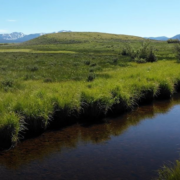

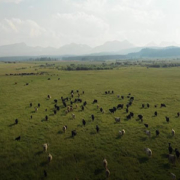
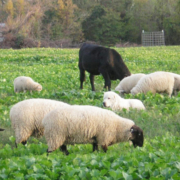 NCAT
NCAT
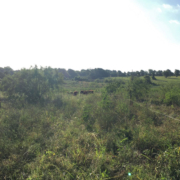
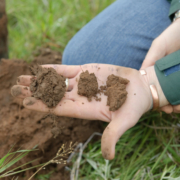
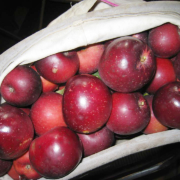
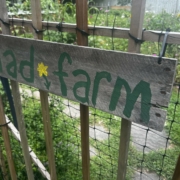
 Wikimedia Commons, LSDSL
Wikimedia Commons, LSDSL
